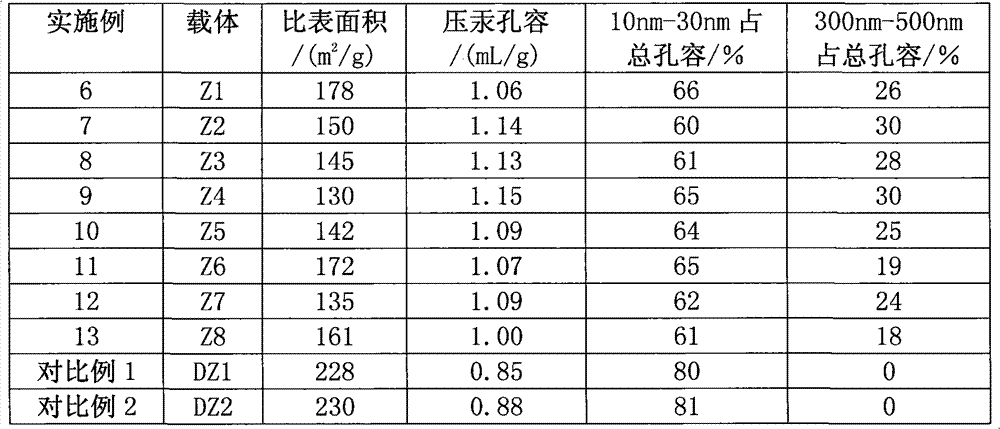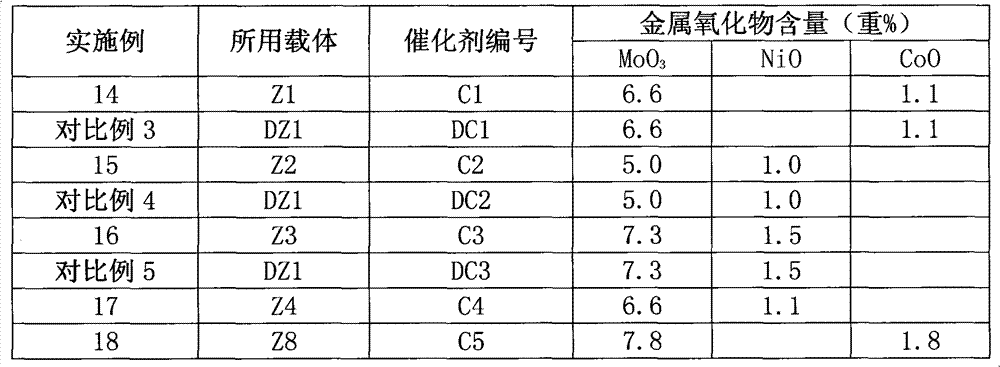Heavy-petroleum hydrogenating deasphaltenizing catalyst and preparation and application thereof
A deasphalting and catalyst technology, which is applied in the field of hydrodeasphalting catalyst and its preparation and application, can solve the problem that the removal rate of asphaltenes is not high, the removal rate of heavy metals and the removal rate of asphaltenes cannot reach Very good match, low asphaltene removal rate, etc.
- Summary
- Abstract
- Description
- Claims
- Application Information
AI Technical Summary
Problems solved by technology
Method used
Image
Examples
Embodiment 1
[0057] Weigh 1000 grams of P1-1, then add 1440 milliliters of aqueous solution containing 10 milliliters of nitric acid (product of Tianjin Chemical Reagent No. 3 Factory), and extrude it into a butterfly bar with an outer diameter of φ1.4 mm on a twin-screw extruder. Dry the wet strips at 120°C for 4 hours to obtain dry strips, shape the dried strips, sieve, grind and sieve the dry strips with a length of less than 2mm (generally called industrial dry strip waste), and take 100-200 Mesh sieving to obtain the modified product P2A of P1-1. The k values of P2A are shown in Table 1.
Embodiment 2
[0059] Weigh 1000 g of P1-1, and flash dry at 240°C for 6 minutes to obtain P2B, a modified product of P1-1. See Table 1 for the k values of P2B.
Embodiment 3
[0061] 200 grams each of P2A obtained in Example 1 and P2B obtained in Example 2 were evenly mixed to obtain the modified product P2C of P1-1. See Table 1 for the k value of P2C.
PUM
 Login to View More
Login to View More Abstract
Description
Claims
Application Information
 Login to View More
Login to View More - R&D
- Intellectual Property
- Life Sciences
- Materials
- Tech Scout
- Unparalleled Data Quality
- Higher Quality Content
- 60% Fewer Hallucinations
Browse by: Latest US Patents, China's latest patents, Technical Efficacy Thesaurus, Application Domain, Technology Topic, Popular Technical Reports.
© 2025 PatSnap. All rights reserved.Legal|Privacy policy|Modern Slavery Act Transparency Statement|Sitemap|About US| Contact US: help@patsnap.com



